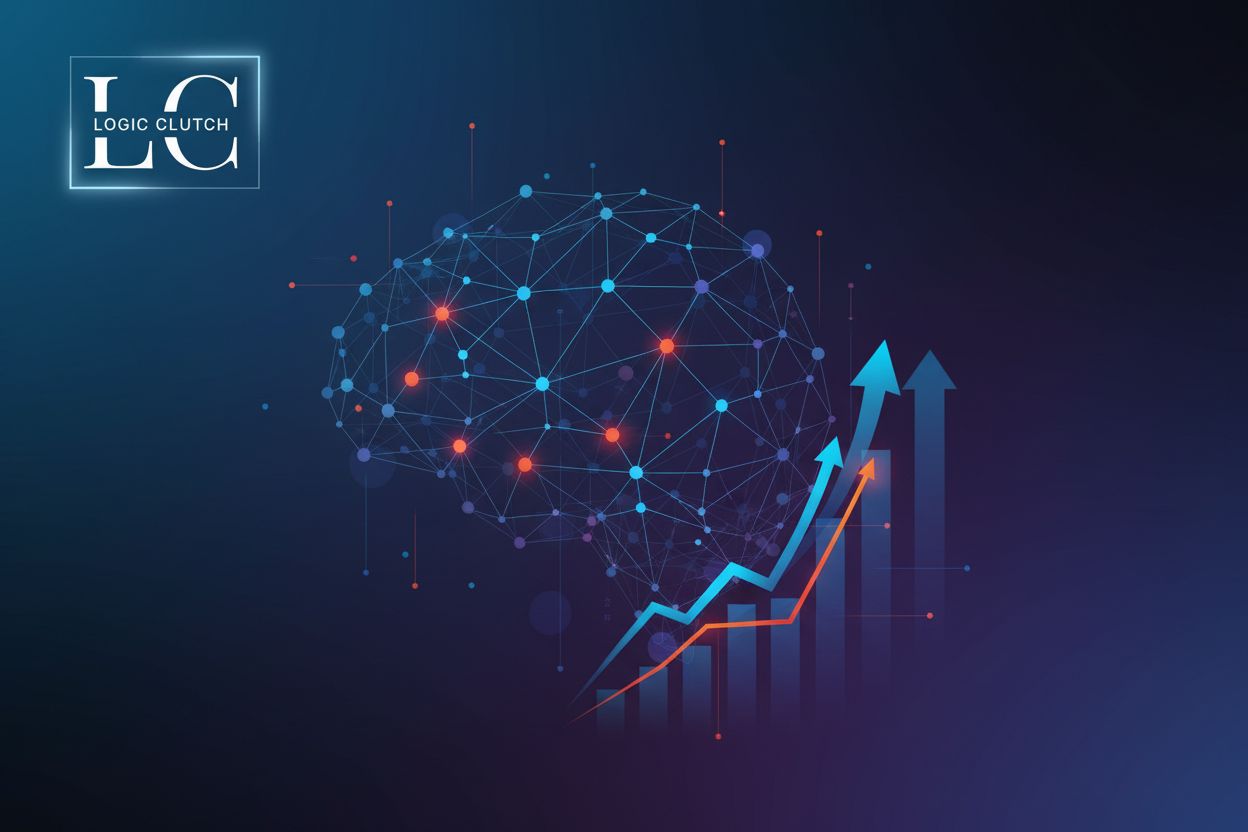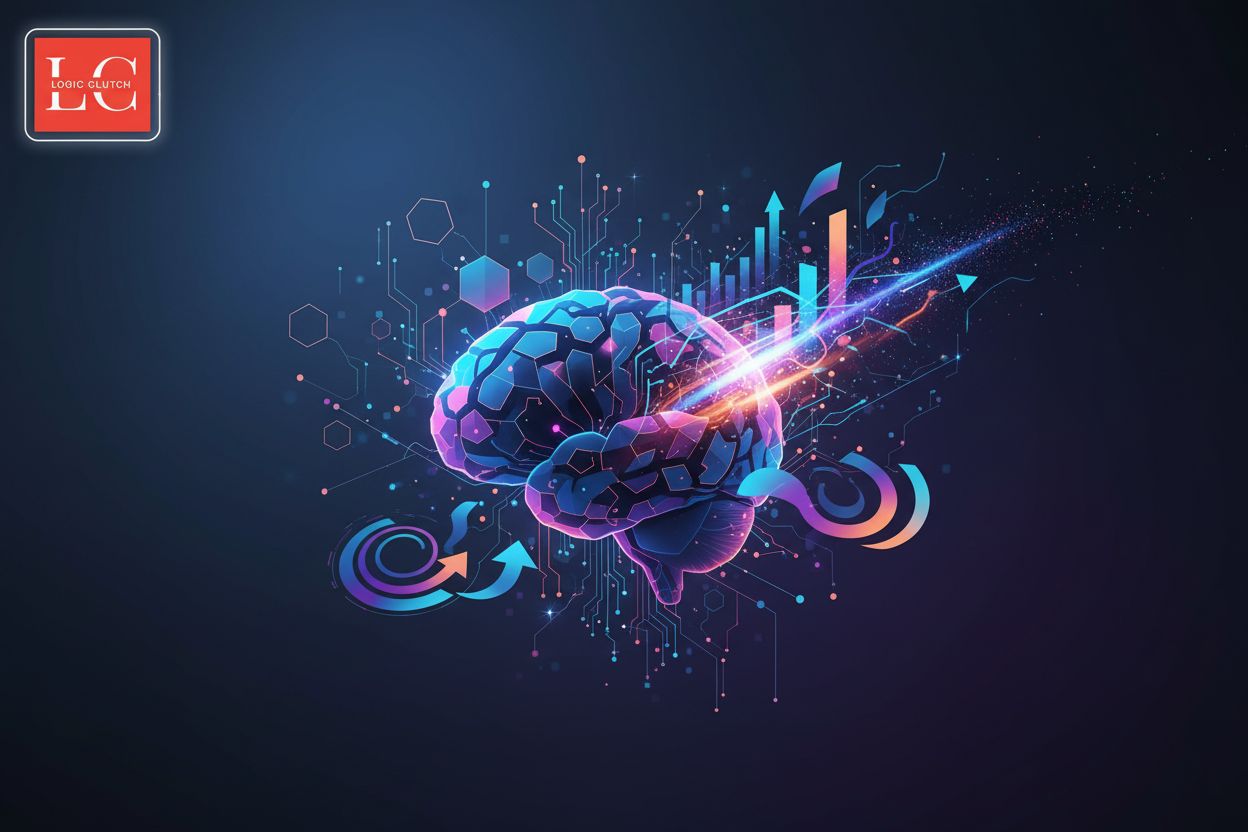All-in-One AI and BI Analytics Solutions for Businesses
TL;DR
The Convergence of AI and BI: Why All-in-One Solutions Matter
So, you're probably wondering why you should care about all-in-one ai and bi solutions. Well, let me tell you, it's kinda a big deal if you wanna stay ahead of the curve. The way businesses operate is changing fast, and staying competitive means leveraging the most powerful tools available. This is where the convergence of Artificial Intelligence (AI) and Business Intelligence (BI) becomes not just beneficial, but essential.
- AI, or artificial intelligence, is all about getting computers to think and learn like humans. We're talkin' machine learning, predictive analytics, the whole shebang. Think of it as automating insights, like matellio says.
- BI, or business intelligence, is more about looking at past data to figure out what happened and why. Visualizing performance, spotting trends-- you know, the usual data deep-dive.
The lines get blurry, though. AI can seriously boost BI, making it way more powerful. (The Blurred Line Between Human Creation and AI Generation)
- Imagine your data's stuck in silos. Sales uses one tool, marketing uses another, and nobody's talking. That's a data silo, and it's a big problem. It's a real pain to get a complete picture when everything's scattered, leading to delayed insights, duplicated efforts, and ultimately, flawed decision-making.
- Managing a bunch of different platforms? It's a nightmare. More logins, more training, more headaches. Plus, they don't always play nice together, making integration a constant struggle.
- Ever waited forever for a report? Integration issues cause delays. And in today's fast-paced world, waiting is losing.
But when you bring AI and BI together in an all-in-one solution, these problems start to melt away.
- Think seamless data flow, real-time analysis. That's what you get when AI and BI are integrated. No more waiting, no more silos.
- One interface to rule them all. Seriously, it's easier to use and adopt. Everyone's on the same page, using the same tools.
- Holistic insights. That's the key. Better decisions because you're seeing the whole picture, not just bits and pieces.
We've covered why all-in-one ai and bi solutions matter. Now, let's dive into the key features you should be looking for in such a platform.
Key Features to Look for in an All-in-One AI and BI Solution
Alright, so you're looking for the real deal when it comes to ai and bi? It's not just about buzzwords, it's about what the solution actually does. Let's get into the nitty-gritty of what to look for.
First off, you gotta have advanced analytics. I mean, if your ai can't do more than just basic reporting, then what's the point, right? We're talking predictive analytics that can forecast future trends. Think about it: a retailer using this to predict what items will be hot sellers next quarter. No more guessing games and overstocking on the wrong stuff. It's about seeing the future, not just reacting to it.
Machine learning algorithms are key for automated pattern detection. No more manually sifting through data to find correlations. Let the ai do the heavy lifting. For example, a healthcare provider could use this to identify patients at high risk of developing a certain condition, allowing for early intervention.
And don't forget natural language processing (nlp). It's not just a nice-to-have, it's crucial for intuitive data exploration. Being able to ask questions in plain english and get answers? Game changer. This significantly reduces the technical barrier to accessing insights, making data more accessible to a wider range of users.
Next up: interactive dashboards. Static reports are so last decade. You need dashboards that let you drill down, filter, and explore the data in real time. Think of it as a choose-your-own-adventure for data.
- Customizable dashboards are essential for monitoring key performance indicators (kpis). I mean, every department has different kpis, so why should everyone use the same dashboard? A sales team needs to see different metrics than a marketing team, duh. For instance, a sales dashboard might allow users to filter by region and product line to see performance trends, while a marketing dashboard could let them drill down into campaign ROI by channel.
- Interactive charts and graphs are key for easy data interpretation. If you can't visualize the data, you can't understand it. Simple as that. Forget those confusing spreadsheets that make your eyes glaze over.
- Real-time data updates? Non-negotiable. Stale data is useless data. You need to know what's happening now, not what happened last week. It's about making timely decisions, not historical observations.
You gotta make sure your ai and bi solution can play nice with all your existing systems. If it can't, you're just creating another data silo.
- Seamless integration with various data sources (crm, erp, databases) is crucial. Your crm data should talk to your erp data, which should talk to your marketing automation data. It's about creating a unified view of your business, not fractured viewpoints.
- Support for cloud and on-premises data environments is also important. Not everyone's ready to go all-in on the cloud, and that's fine. Your ai and bi solution should be flexible enough to handle both.
- And don't forget api connectivity for custom integrations. You never know what kind of weird, custom system you might need to connect to. Having apis makes it all possible.
Last but not least, look for ai-powered automation. AI isn't just about insights, it's about action.
- Automated report generation and distribution is a huge time-saver. No more manually creating and sending out reports every week. Let the ai do it for you.
- Intelligent alerts for anomaly detection? Key. AI can spot weird stuff happening in your data way faster than a human can. A sudden drop in sales? A spike in customer churn? The ai should be able to alert you immediately.
- And don't forget rpa (robotic process automation) integration for streamlined workflows. Think automating invoice processing, order fulfillment, all the other tedious tasks that suck up your time.
So, those are the key features to look for. Now, let's explore how these solutions can actually transform your business operations.
Transforming Business Operations with Integrated AI and BI
Integrated ai and bi? It's not just about fancy tech; it's about making your business way smarter and more efficient, transforming how each department operates and automates their processes.
Sales: Imagine your sales team not just reacting to leads but predicting which ones are most likely to convert. With integrated ai and bi, they can analyze historical data, market trends, and customer behavior to optimize lead generation by scoring leads based on engagement and predicting conversion likelihood. No more wasting time on dead ends.
Marketing: Forget generic campaigns that nobody clicks on. AI helps marketing teams personalize customer experiences by understanding individual preferences and behaviors. They can improve campaign performance by targeting the right people with the right message at the right time, for example, by dynamically adjusting ad spend based on real-time campaign ROI.
Operations: Supply chain bottlenecks? Cost overruns? Integrated ai and bi can optimize supply chain management by predicting demand, identifying potential disruptions, and streamlining logistics. It's about reducing costs and ensuring smooth operations from start to finish, like rerouting shipments automatically based on weather forecasts.
Automating data collection and preparation: Data wrangling is a pain, right? AI can automatically collect data from various sources using connectors and APIs, clean it using intelligent data profiling and anomaly detection, and prepare it for analysis. This saves time and ensures that everyone's working with accurate, up-to-date information.
Streamlining reporting and analytics workflows: Remember those days of manually creating reports? AI can automate reporting and analytics workflows, generating insights in real-time and freeing up analysts to focus on more strategic tasks.
Reducing manual effort and improving efficiency: From invoice processing to customer support, AI can automate repetitive tasks, freeing up employees to focus on higher-value activities. This not only improves efficiency but also boosts employee morale.
Ensuring data quality and accuracy: Garbage in, garbage out, as they say. AI can monitor data quality, identify errors, and ensure that everyone's working with reliable information. It's about building trust in your data.
Implementing data governance policies: Data governance can be a headache, but it's also crucial. AI can help implement data governance policies by monitoring data access, ensuring compliance, and preventing data breaches.
Enhancing data security and compliance: Data breaches are expensive and damaging. AI can enhance data security by detecting anomalies, identifying potential threats, and ensuring compliance with regulations.
So, bottom line? Integrated ai and bi isn't just a tech upgrade; it's a complete transformation of how your business operates. By enhancing decision-making, automating processes, and improving data intelligence, you can unlock new levels of efficiency, productivity, and growth. Now, let's talk about how to actually get one of these solutions up and running.
Implementing All-in-One AI and BI Solutions: A Step-by-Step Guide
Alright, so you've decided to take the plunge and implement an all-in-one ai and bi solution? Cool, but where do you even start? Honestly, it can feel like trying to assemble Ikea furniture without the instructions, but it doesn't have to be that bad.
First things first, you gotta figure out what problems you're trying to solve. Sounds obvious, right? But it's easy to get caught up in the hype and forget what you actually need.
- Identifying Key Business Challenges and Opportunities: Are you struggling with customer churn? Is your supply chain a mess? Maybe you're just trying to find new markets. Pinpointing these challenges is crucial. For example, a healthcare provider might want to reduce patient readmission rates, or a retailer might be trying to optimize inventory.
- Evaluating Existing Data Infrastructure and Quality: Take a hard look at your data. Is it scattered across different systems? Is it accurate? Is it even usable? If your data's a hot mess, ai isn't gonna magically fix it. You need a solid foundation.
- Defining Clear Objectives and Success Metrics: What does success look like? More sales? Happier customers? Fewer errors? You need to define these metrics upfront so you can actually measure whether your ai and bi solution is working.
Okay, so you know what you need. Now it's time to pick a solution. There's a ton of options out there, and they're not all created equal.
- Evaluating Vendor Capabilities and Pricing: Do your homework. Check out customer reviews, ask for demos, and compare pricing models. Don't just go for the cheapest option – think about long-term value. During demos, ask vendors to show how their solution handles specific use cases relevant to your business, and look for detailed, verifiable customer testimonials rather than vague endorsements. A recent article on n8n provides a list of 20 enterprise-grade ai tools organized into five key categories.
- Ensuring Scalability and Flexibility: Can the solution grow with your business? Can it adapt to changing needs? You don't want to be stuck with something that's obsolete in a year or two, you know?
- Checking for Industry-Specific Features and Compliance: Some industries have specific regulations or requirements, so make sure the solution can handle them. For example, a financial institution needs to comply with strict data security standards.
Alright, you've picked a solution. Now it's time to actually use it. This is where things can get tricky, so buckle up.
- Planning the Implementation Process: Don't just dive in headfirst. Create a detailed plan with clear timelines and milestones. Who's responsible for what? What could go wrong? Think it through.
- Integrating with Existing Systems and Data Sources: This is where you'll probably need some help from your it team. The ai and bi solution needs to play nice with your crm, erp, and whatever other systems you're using. As discussed previously, seamless integration is key to avoiding data silos.
- Configuring Security Settings and Access Controls: Data security is non-negotiable. Make sure you're setting up proper access controls and protecting sensitive information.
You've got a shiny new ai and bi solution. Now you need to get people to use it. This is often the hardest part, tbh.
- Providing Comprehensive Training to Users: Don't just throw people into the deep end. Provide training sessions, create documentation, and offer ongoing support.
- Encouraging User Feedback and Continuous Improvement: Ask for feedback. What's working? What's not? Use that feedback to improve the solution and make it more user-friendly.
- Establishing a Data-Driven Culture: This is the big one. You need to create a culture where people actually value data and use it to make decisions. That means getting buy-in from leadership and rewarding data-driven behavior.
Implementing an all-in-one ai and bi solution isn't a walk in the park, but if you take it one step at a time, you'll be well on your way to unlocking some serious insights. To show you what's possible, let's look at some real-world examples.
Case Studies: Real-World Success with Integrated AI and BI
Ever wonder if ai can actually make a difference in the real world, or if it's all just hype? Well, let's take a look at how some companies are actually using ai and bi together to get some sweet results.
One common challenge many organizations face is inaccurate sales forecasts. This tends to leads to inventory nightmares. A mid-sized e-commerce retailer decided to use an integrated ai and bi solution for predictive analytics, and guess what? They improved their forecast accuracy by like, 20%! This also reduced inventory costs by a solid 15%. That's not bad at all. It's about predicting what's coming, not just reacting to what happened.
Another company, a large healthcare provider, was struggling with keeping patients happy and reducing readmissions. So, they used ai to personalize patient outreach and predict at-risk individuals. The result? Patient engagement improved significantly, and they managed to cut down on readmission rates by a notable percentage. Personalization isn't just a buzzword; it actually makes a difference.
Then there's the logistics company that had a supply chain that was a mess. Bottlenecks and high costs everywhere. They implemented an integrated ai and bi platform for real-time data analysis, and they saw a significant drop in supply chain costs, and delivery times improved dramatically. That's what i call efficiency.
These are just a few examples, but they show how integrated ai and bi solutions can have a real impact on your business. Now, let's peer into the future and see what's next for these powerful technologies.
The Future of AI and BI: Trends and Predictions
Okay, so what's coming up for ai and bi? It's not just about making things faster, but smarter too - you know, actually understanding what's going on.
- Augmented analytics is on the rise. Think of it as ai that helps you find insights, not just spits out reports. This means less time digging through data and more time actually understanding what it means, and making decisions. Features like automated data discovery, anomaly detection, and natural language query generation will become standard, making complex analysis more accessible.
- Cloud-based ai and bi are becoming the norm. It's just easier to scale and manage everything in the cloud, plus, it's more accessible to smaller businesses that don't have huge it departments.
- Ethical ai is finally getting the attention it deserves. We're talking about responsible data use, algorithmic fairness, and making sure ai isn't biased. It's not just about what ai can do, but what it should do. Ensuring fairness, accountability, and transparency in AI systems is paramount to building trust and avoiding unintended negative consequences.
logicclutch is one company helping businesses use ai and bi for digital transformation, offering customized salesforce crm solutions, ai-powered saas solutions, and data management services. They're helping orgs achieve data intelligence to get a competitive edge.
- AI and BI will become even more integrated. Think seamless workflows, real-time analysis, and ai that's baked into everything you do.
- Businesses will rely on ai for strategic decisions. It's not just about automating tasks, but actually using ai to make smarter choices about where to invest and how to grow.
- The demand for ai and bi pros will keep growing. If you're looking for a career with a future, this is it.
So, what's the takeaway? ai and bi are here to stay, and they're only going to become more important in the years ahead.











